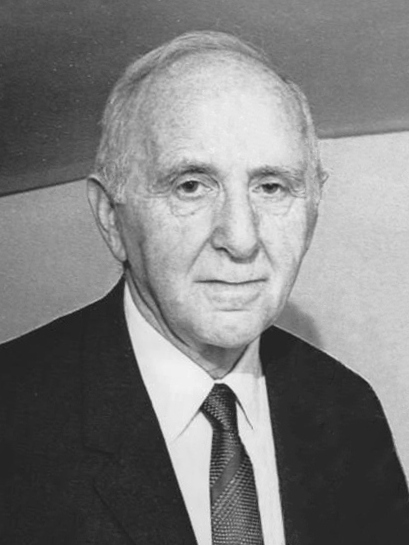
Simon Kuznets
1901-1985

Simon Kuznets is best known for his studies of national income and its components. Prior to World War I, measures of GNP were rough guesses, at best. No government agency collected data to compute GNP, and no private economic researcher did so systematically, either. Kuznets changed all that. With work that began in the 1930s and stretched over decades, Kuznets computed national income back to 1869. He broke it down by industry, by final product, and by use. He also measured the distribution of income between rich and poor.
Although Kuznets was not the first economist to try this, his work was so comprehensive and meticulous that it set the standard in the field. His work was funded by the nonprofit National Bureau of Economic Research, which had been started in 1920. Kuznets later helped the U.S. Department of Commerce to standardize the measurement of GNP. In the late 1940s, however, he broke with the Commerce Department over its refusal to use GNP as a measure of economic well-being. He had wanted the department to measure the value of unpaid housework because this is an important component of production. The department refused, and still does.
Kuznets’s development of measures of savings, consumption, and investment came along just as Keynes’s ideas about how national income is determined created a demand for such measures. Thus, Kuznets helped advance the Keynesian revolution. Kuznets’s measures also helped advance the study of econometrics established by ragnar frisch and jan tinbergen.
Kuznets approached his work with a strict adherence to fact and a desire to understand economic phenomena through quantitative measurement. He had started early in his native Russia: he was head of a statistical office in the Ukraine under the Bolsheviks before moving to the United States at age twenty-one.
Many economists believe that Kuznets received the 1971 Nobel Prize for his measurement in national income accounting, and certainly that was enough to merit the prize. But in fact, the prize was awarded for his empirical work on economic growth. In this work Kuznets identified a new economic era—which he called “modern economic growth”—that began in northwestern Europe in the last half of the eighteenth century. The growth spread south and east and by the end of the nineteenth century had reached Russia and Japan. In this era, per capita income rose by about 15 percent or more each decade, something that had not happened in earlier centuries.
One of Kuznets’s more startling findings concerns the effect of economic growth on income distribution. In poor countries, he found, economic growth increased the income disparity between rich and poor people. In wealthier countries, economic growth narrowed the difference. In addition, Kuznets analyzed and quantified the cyclical nature of production and prices in spans of fifteen to twenty years. Such trade cycles, while disputed, are often referred to as “Kuznets cycles.”
Kuznets was a professor of economics at the University of Pennsylvania (1930–1954), Johns Hopkins University (1954–1960), and Harvard University (1960–1971). He was president of the American Economic Association in 1954.
About the Author
David R. Henderson is the editor of The Concise Encyclopedia of Economics. He is also an emeritus professor of economics with the Naval Postgraduate School and a research fellow with the Hoover Institution at Stanford University. He earned his Ph.D. in economics at UCLA.
Selected Works
Related Entries
Related Links
Rosolino Candela, Can Price Controls Fight Inflation? at Econlib, September 5, 2022.
Diane Coyle on GDP, an EconTalk podcast, April 28, 2014.
Thomas Piketty on Inequality and Capital in the 21st Century, an EconTalk podcast, September 22, 2014.
Robert Townsend on Development, Poverty, and Financial Institutions, an EconTalk podcast, March 14, 2011.
